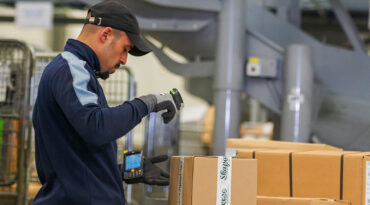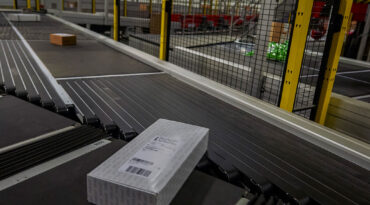By BEUMER Group
To meet the transformation that e-commerce surges have brought upon them, CEP businesses are being forced to keep up with developments.
Challenges in adjusting to current e-commerce drives
Christopher Kernhan is the Managing Partner at the global management consulting firm, Pacific Consulting Group, and he is a leading consultant to the logistics sector. Of the e-commerce transformation, he says:
“It is no longer enough to focus on small optimisation gains on a network designed for stable, almost static, operations when operating in a dynamic world, both structurally and in terms of the pace of growth.”
E-commerce changes not just year to year, but month to month, Kernahan says.
“Online operators with new product offerings are looking at new modes of contracting and executing delivery. The delivery of fresh food during the pandemic was a case in point – legacy postal parcel operators did not ordinarily have capabilities to manage cold chain but are had to adjust on the fly.”
– Christopher Kernahan, Managing Partner at Pacific Consulting Group
At the same time, CEP businesses are facing competition from startups and dynamic businesses who want to push the boundaries of what innovations in technology can offer, simply because customers are demanding it and don’t understand why legacy players can’t deliver it. The transformation involves a huge change of mindset for CEP companies.
Shifting geographical dynamics
A further challenge is the geographical impact that e-commerce has had on distribution, and how distribution centres and hubs should respond. Brian Hansen of BEUMER Group explains:
“Whereas in the past, big cities with dense populations were driving e-commerce growth, the pandemic spread the e-commerce transformation more widely, geographically. This forced CEP businesses to rethink not just their capacity but how to build their infrastructure to meet this demand.”
Whether this trend is sustained in all countries is uncertain but it is certainly a development that could be challenging for the CEP companies in the coming years. Not least because many towns do not welcome the idea of large diesel-driven trucks transiting through them.
Obstacles for national post and parcel houses
These challenges can be particularly hard to overcome for national postal and parcel houses. While digital transformation has become a strategic priority, adapting their organisational culture and strategy to the needs of the digital economy can be more difficult. This is because national postal and parcel businesses tend to exhibit different postal infrastructure, as well as different skills and patterns of employment.
But while commercial hubs have the advantage of being able to make changes faster, national postal houses do have the significant advantage of already having the last mile in place – their contact with the end consumer is well established. National organisations will be able to leverage this advantage in this most important phase of production and the question remains which entity is going to move fastest or best to cover it all.
Opportunities for business development and advancement
If these are the challenges facing the CEP industry, where are the opportunities to stay ahead of the game? According to Pacific Consulting Group Managing Partner, Christopher Kernahan, the e-commerce growth (in particular, the demand for “time-definite” or “next-day” deliveries), has allowed CEP businesses to make the crucial transition from letter-heavy to parcel-heavy operations financially viable and realise a real future for their businesses.
All CEP players can seize these types of opportunities enabled by technology, says Kernahan. They can capture more of the e-commerce growth, giving customers easy access while also giving their workforces roadmaps for the future.
Singapore Post transitions from letter to parcels
Singapore Post has installed advanced parcel pickup boxes in some of the major residential apartment buildings in Singapore. Its postal workers have transitioned from postal delivery officers to mailbox technicians, becoming first-line machine technicians – generating greater efficiency for Singapore Post and leaving its employees feeling part of the business’ growth, instead of part of its decline.



